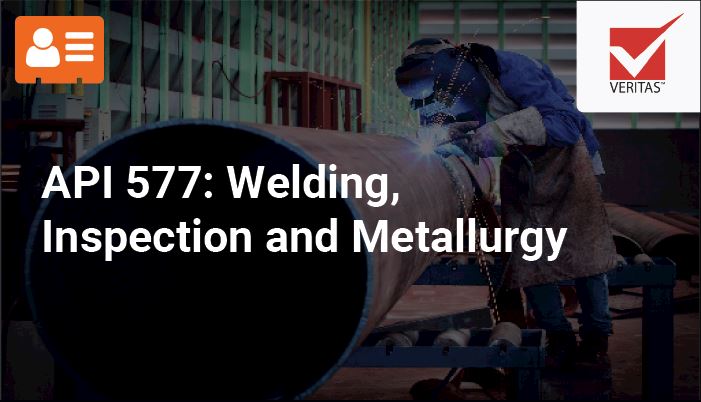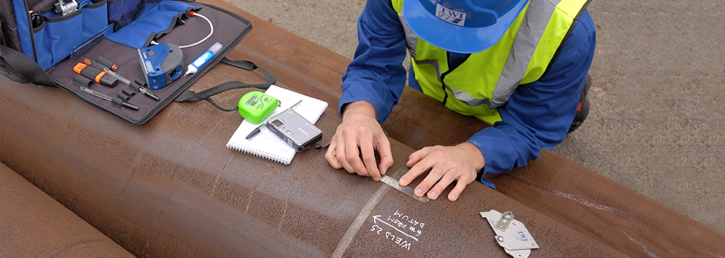Understanding the Relevance of Welding Inspection Madison in Building And Construction
Understanding the Relevance of Welding Inspection Madison in Building And Construction
Blog Article
Checking Out Advanced Equipment and Methods for Accurate Welding Assessment
In the world of welding assessment, the quest of precision and integrity is paramount, stimulating the advancement of cutting-edge tools and techniques. Technologies such as phased variety ultrasonic testing and digital radiography are revolutionizing flaw detection, offering exceptional precision in identifying welding flaws. Moreover, laser scanning developments and automatic assessment systems, outfitted with synthetic intelligence, are redefining the landscape by reducing human error and boosting precaution. As these innovative methods continue to advance, they guarantee not only to change evaluation practices however additionally to elevate intriguing inquiries concerning the future of high quality guarantee in commercial applications.
Ultrasonic Testing Advancements
Ultrasonic testing technologies often represent the center of innovations in welding evaluation modern technologies. These technologies have actually considerably improved the ability to discover and examine stoppages within welded structures, guaranteeing boosted stability and safety.

In addition, improvements in software program formulas for data evaluation have enhanced the accuracy of issue detection and sizing. Automated ultrasonic screening systems currently offer high-resolution imaging, enabling in-depth analyses of weld top quality. These systems are typically incorporated with advanced visualization tools, which help with the interpretation of results.
Radiographic Examination Methods
While ultrasonic testing advancements have actually set a high standard in non-destructive assessment, radiographic assessment methods remain to play an indispensable role in welding evaluation by using special insights right into product stability. Radiographic testing (RT) uses using X-rays or gamma rays to penetrate materials, developing a radiograph that visually represents the interior framework of a weld. This imaging capacity is vital for finding subsurface flaws such as porosity, inclusions, and cracks that may not show up via surface inspections.
The process involves positioning a radiation source on one side of the weld and a detector on the contrary side. Variations in product thickness and density impact the depletion of the rays, generating a different picture that specifically defines imperfections. RT is specifically beneficial for examining thick areas and complex geometries where various other approaches may drop brief.
In spite of its effectiveness, radiographic examination should be carried out with strict adherence to safety procedures due to the dangerous nature of ionizing radiation. The analysis of radiographs calls for competent employees, as the top quality of the evaluation straight influences the integrity of the inspection. As a result, continuous developments in electronic radiography are improving photo clearness and analysis performance, enhancing RT's essential function in guaranteeing weld top quality.
Laser Scanning Breakthroughs
Welcoming laser scanning innovation in welding inspection has reinvented the assessment of weld quality and honesty. Unlike conventional examination strategies, laser scanning provides rapid information procurement, considerably improving the performance and precision of weld assessments.
Laser scanning advancements have caused substantial enhancements in identifying and identifying surface area defects such as porosity, absence of combination, and undercuts. The high-resolution information enables assessors to do extensive evaluations, ensuring that welds satisfy rigorous sector criteria. Additionally, this method supports the growth of electronic documents, assisting in lasting quality control and traceability.
Additionally, laser scanning modern technology incorporates flawlessly with software program solutions designed for automated problem detection and evaluation. The resultant data can be conveniently shared and evaluated, advertising collective decision-making processes. As industries continue to require greater requirements for weld high quality, laser scanning stays at the forefront, providing exceptional accuracy and performance in welding evaluation.
Automated Examination Systems

Automated inspection systems offer the advantage of uniformity, getting rid of human mistake and subjectivity from the examination process. They are developed to operate in various settings, from production floors to remote field sites, ensuring detailed protection. Welding Inspection Madison. These systems can be set to abide by particular welding requirements and requirements, supplying detailed records and documentation for high quality control purposes
Additionally, the integration of cloud-based systems assists in the storage space and evaluation of large quantities of evaluation information. This makes it possible for trend evaluation and anticipating maintenance, permitting suppliers to resolve prospective issues before they escalate. The adoption of automatic evaluation systems is a crucial relocation towards improving the reliability and efficiency of welding procedures in commercial applications.

Enhancing Safety and Performance
A substantial element of boosting safety and efficiency in welding evaluation exists in the integration of innovative technologies that streamline procedures and go to this web-site minimize risks. The fostering of sophisticated non-destructive testing (NDT) techniques, such as ultrasonic testing, phased range ultrasonic testing (PAUT), and radiographic testing, plays an essential function in making certain structural honesty without endangering the safety of the personnel entailed. These techniques enable detailed examinations with minimal downtime, reducing prospective hazards associated with typical methods.
Furthermore, the application of real-time learn this here now information analytics and artificial intelligence formulas has transformed the method evaluation information is interpreted. By using predictive analytics, possible flaws can be recognized before they show up right into vital failures, making certain timely treatments and upkeep. This positive strategy dramatically boosts functional performance and safety in welding processes.
Additionally, remote evaluation technologies, including drones and robotic spiders equipped with high-resolution cams, enable examiners to assess hard-to-reach locations without exposing them to unsafe problems. This not only enhances inspection accuracy however also reduces human danger. By leveraging these sophisticated devices and approaches, markets can accomplish higher safety and security requirements and operational effectiveness, inevitably resulting in more trusted and lasting welding evaluation methods.
Conclusion
The integration of advanced tools and methods in welding inspection dramatically improves defect detection and makes certain architectural stability. These innovations not only boost evaluation efficiency yet likewise add to improved safety and quality assurance in industrial welding applications.

Ultrasonic useful content testing advancements frequently stand for the center of developments in welding inspection technologies.While ultrasonic screening innovations have set a high standard in non-destructive exam, radiographic evaluation strategies continue to play an integral role in welding inspection by using one-of-a-kind insights into product honesty.Welcoming laser scanning technology in welding inspection has actually revolutionized the assessment of weld top quality and honesty. As industries continue to demand higher requirements for weld top quality, laser scanning stays at the leading edge, supplying unmatched precision and effectiveness in welding assessment.
Automated evaluation systems use the benefit of consistency, removing human mistake and subjectivity from the assessment procedure.
Report this page